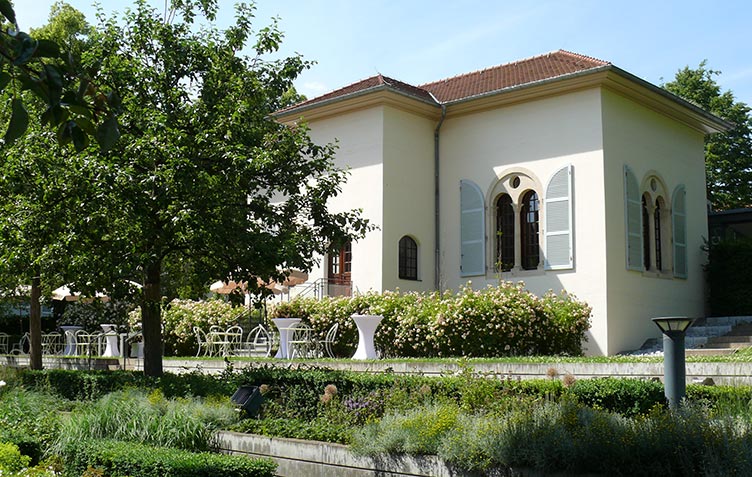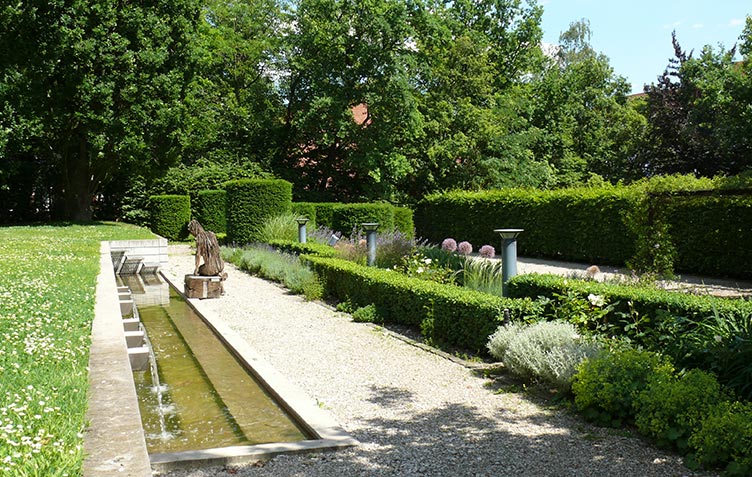
The Mansion Garden
The patrician families who had summer houses on the Treibberg above Hirschelgasse used their gardens – which extended to the city walls – as a peaceful retreat and as places for parties and games. Humanist ideals conceived these green spaces as locations for edification, sociability and the display of status.
Today, a broad stairway leads to the terraced garden that links the Tucher Mansion to the rebuilt Hirsvogelsaal. The garden’s modern layout, designed by Nuremberg landscape architect Bernard Lorenz and awarded the 2004 Architecture Prize of the City of Nuremberg, follows the structural principles of Renaissance gardens.

Stylistic echoes appear in such garden features as the well, lawn, formal parterres, and the mixture of ornamental and useful plants. Fruit trees, herbs, flowers, hedges and topiary evergreens, clear pathways, and a rose-covered pergola establish an idyllic, serene setting, just as they did in past centuries, for relaxed lingering, happy games and convivial festivities.
The splendid Hirsvogelsaal, built for parties and dances, also overlooked such an artfully arranged garden in its original location: just as they did then, interior and exterior now elegantly complement one another.



